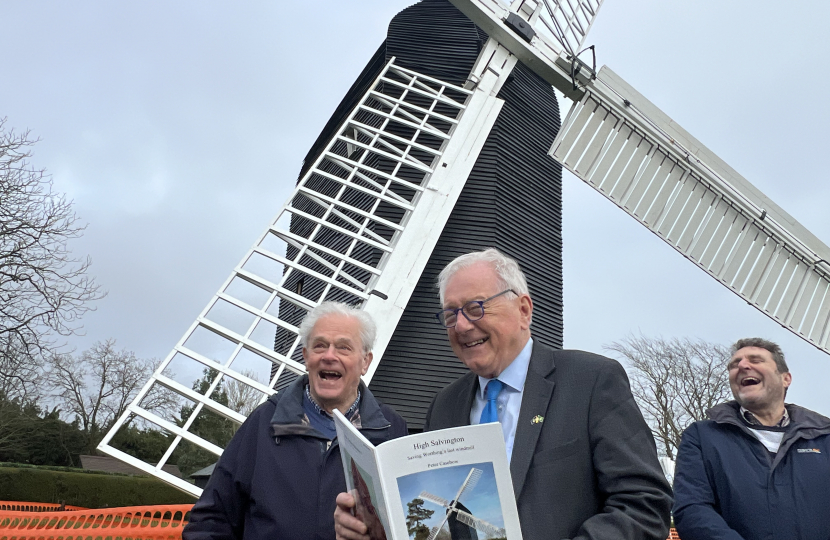
The Palace of Westminster and its neighbour Westminster Abbey have been together for ages. The Abbey has an interesting history. There have been 40 coronations, burials of 18 English, Scottish and British monarchs, and 16 royal weddings. The abbey clock has just an hour hand; the four clocks in the Palace’s Elizabeth tower allow for greater precision. Big Ben’s bongs are appreciated alike by residents, Westminster workers and tourists.
The success of the London Eye now draws visitors across Westminster bridge. Before, people walked part way across, took a photograph with Big Ben in the background before coming back to the Westminster side. Now there can be as many on the South Bank, enjoying the range of attractions and refreshments.
Virginia and I have joined in English Hospitality Week with enthusiasm. We entertained a group in our Worthing home before stepping out over the Channel; walking down the pier to the popular Perch, before rising to the Tern Restaurant with sparkling views of the Worthing shore. We commend Johnny Stanford and his cheerful knowledgeable team members.
It was a great place for my wife’s birthday. The next table seemed expert on the Findon community shop. We were charmed by the seasonal tasting menu, matched to brilliant English wines. It was a special evening.
Two local attractions merit mention: I commend taking visitors to the famous chalk garden developed by the Sterns at Highdown. The visitor centre tells the story well. Volunteers and professional staff are constantly improving the experience for experts and for those new to the care of plants.
Close by is the High Salvington Windmill. Lucy Brooks kindly introduced me to the experts who over thirty years have restored the post-mill. The history is on their website.
The setting is lovely. The engineering is impressive and local councillors have given constant encouragement. Major Tom Wye was the chair for years. Councillor Richard Nowak was also there to ensure I was shown each corner of the display. A visiting teenager will be interested in how our lives depended on the wind powering the grain grinding, just as the Rampion turbines generate much of our electricity.
Public investment as at Highdown, private investment on the pier and volunteers’ persistent endeavours at High Salvington each produce valued results.
At the House of Commons, I met constituents and others at the Oxfam meeting about the tragic situation in Gaza. The coming Sunday is the United Nations Day for Human Rights, marking the assassination of Saint Oscar Romero in the Central American country El Salvador.
In the spirit of the late archbishop: “Peace is not the product of terror or fear; peace is not the silence of cemeteries; peace is not the silent result of violent repression. Peace is the generous, tranquil contribution of all, to the good of all.”
We each wish for an end to the violence in the middle east. Let us all work for unity at times of division.
Of local interest, there are the running issues of property developers trying to change, I think irreparably, the nature of our green gaps. In addition to Persimmon’s unwanted persistence appealing against the rejection of their proposal to build over the Goring – Ferring gap, we now face two more unpopular applications.
Perhaps the only apparent supporter of Persimmon has ideas to make the southern gap a place of congregation and refreshment. I hope the authorities will on merit reject licences and any necessary planning consents.
At Kingston, I cannot understand why a district planner did not recommended rejection of another application to build on a prime agricultural field.
Our Borough and District Councils should be supported in planning the future of our locality, not planners who may have misguided themselves and not planning inspectors acting out of line with what ministers say in answer to me in the House of Commons.
It is time to conserve what we have.



